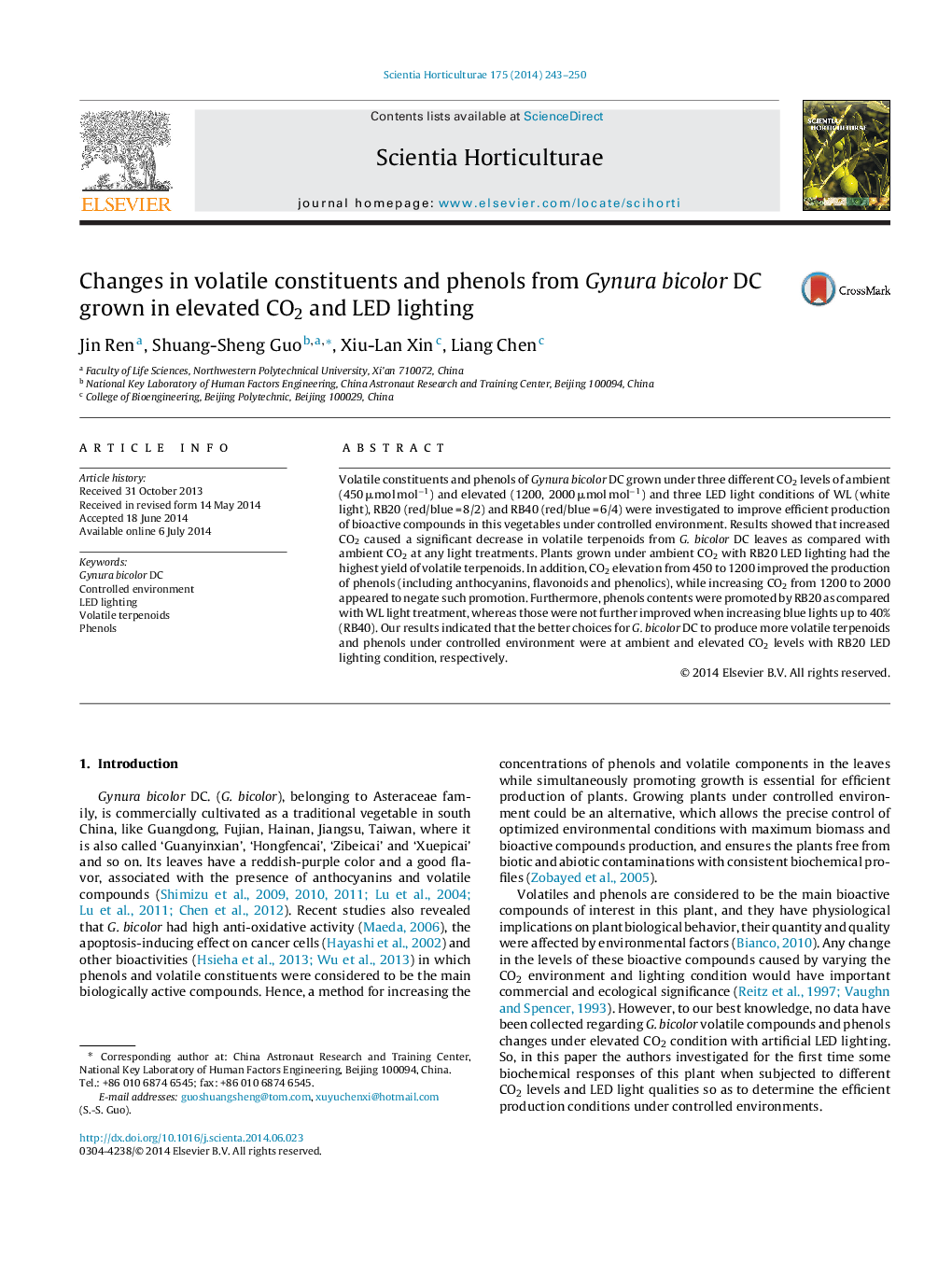| Article ID | Journal | Published Year | Pages | File Type |
|---|---|---|---|---|
| 4566676 | Scientia Horticulturae | 2014 | 8 Pages |
•CO2 enrichment reduced volatile terpenoids yield in Gynura bicolor DC.•CO2 elevation to 1.2k improved phenols production, but that to 2k negated such promotion.•Increasing blue lights from 20% to 40% did not further improve the accumulation of phenols.•Better choice for the production of terpenoids was at ambient CO2 with RB20 LED lighting.•Suitable condition for the accumulation of phenols was at elevated CO2 with RB20 LED lighting.
Volatile constituents and phenols of Gynura bicolor DC grown under three different CO2 levels of ambient (450 μmol mol−1) and elevated (1200, 2000 μmol mol−1) and three LED light conditions of WL (white light), RB20 (red/blue = 8/2) and RB40 (red/blue = 6/4) were investigated to improve efficient production of bioactive compounds in this vegetables under controlled environment. Results showed that increased CO2 caused a significant decrease in volatile terpenoids from G. bicolor DC leaves as compared with ambient CO2 at any light treatments. Plants grown under ambient CO2 with RB20 LED lighting had the highest yield of volatile terpenoids. In addition, CO2 elevation from 450 to 1200 improved the production of phenols (including anthocyanins, flavonoids and phenolics), while increasing CO2 from 1200 to 2000 appeared to negate such promotion. Furthermore, phenols contents were promoted by RB20 as compared with WL light treatment, whereas those were not further improved when increasing blue lights up to 40% (RB40). Our results indicated that the better choices for G. bicolor DC to produce more volatile terpenoids and phenols under controlled environment were at ambient and elevated CO2 levels with RB20 LED lighting condition, respectively.
